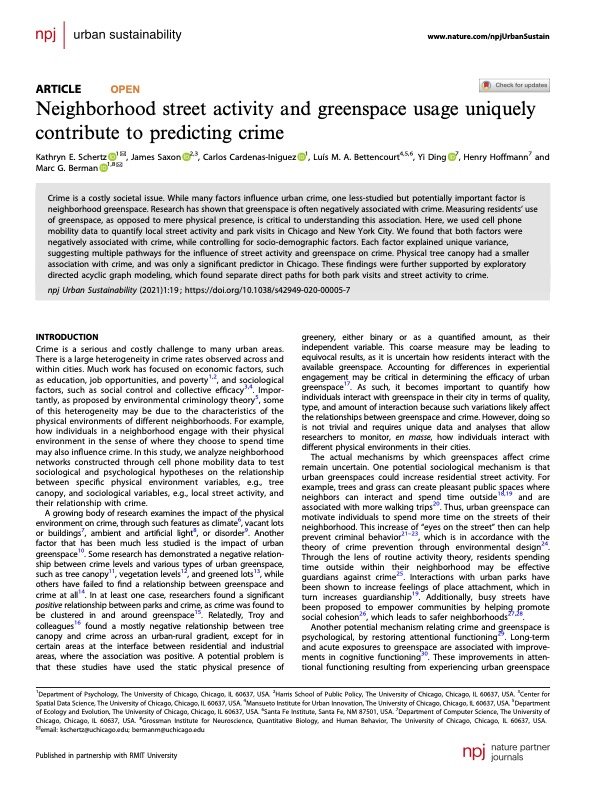By Dyna Ibrahim
More than ever, technology, and the Internet in particular, has become an integral part of the daily lives of Canadians. In 2018, it was estimated that all but about 1% of Canadian households with children had access to the Internet (Frenette et al. 2020). Concerns over online safety and online victimization were exacerbated with many daily activities moving online in 2020 as Canadians grappled with the COVID-19 pandemic. As public health measures were put in place across Canada to combat the virus, many children relied on virtual learning and spent more time indoors and online (Moore et al. 2020). Undoubtedly, there are many advantages to using technology and, for children, being connected helps them learn, grow and fulfil their potential (UNICEF 2017). However, the use of technology and the Internet also comes with risks. Among the most serious risks of spending time online, especially for children, is the susceptibility to online sexual exploitation and abuse (ECPAT 2016; UNICEF 2017). There is no one standard definition for online child sexual exploitation and abuse. It encompasses a wide range of behaviours and situations, from sexual solicitation of a child—with or without a response from the child—to sexual grooming (the trust-building period prior to abuse), to sexual interaction online (cybersex) or offline (meeting in person), to accessing, producing or sharing images related to the abuse of children and youth (De Santisteban and Gamez-Guadix 2018; Kloess et al. 2014). It can be committed by adults or youths, and it can involve strangers or family members and acquaintances (Mitchell et al. 2005). Generally, in the Canadian legal context, the crime of online child sexual exploitation and abuse includes: child sexual abuse material, selfgenerated materials and sexting1 (often distributed without consent), sextortion,2 grooming and luring, live child sexual abuse streaming and made-to-order content (Public Safety Canada 2022). The short- and long-term effects of childhood sexual victimization are well documented (Beitchman et al. 1991; Browne and Finkelhor 1986; Hailes et al. 2019; Olafson 2011). More recently, research on the effects of online child sexual exploitation has found that victims of this crime often suffer a range of negative impacts including psychological difficulties, negative sexual development, and subsequent substance misuse and depressive symptomology (Carnes 2001; Hanson 2017; Ospina et al. 2010; Say et al. 2015; Whittle et al. 2013a). Additionally, victims of online child sexual exploitation continue to experience victimization through the actual or threatened re-distribution of their images, long after any contact abuse has ended (Canadian Centre for Child Protection 2017; Martin 2015). Every child has a right to protection, as a fundamental human right. Children (under age 18) also have specific rights, recognized in the 1989 Convention on the Rights of the Child, given their vulnerability and dependence. In 1991, Canada ratified the United Nations Convention on the Rights of the Child, pledging to protect children from all forms of exploitation and abuse, among other forms of harm and endangerment. The provision and protection of children’s Convention rights is the primary responsibility of governments at all levels (UNICEF Canada 2022). Canada has also signed on to the Optional Protocol to the Convention on the Rights of the Child on the sale of children, child prostitution and child pornography (United Nations Human Rights Office of the High Commissioner 2022). As the use of technology among Canadians has increased in recent years, so too have Canada’s efforts to protect children from online predators. In 2004, the National Strategy for the Protection of Children from Sexual Exploitation on the Internet was developed to combat this crime in Canada. Since then, the National Strategy has been renewed and expanded, and in 2019, a renewed commitment was made with the Government of Canada allocating funds to supports efforts to raise awareness, reduce the stigma associated with reporting, increase Canada’s ability to pursue and prosecute offenders and work together with the digital industry to find new ways to combat the sexual exploitation of children online. Most recently, budget 2021 proposed to provide $20.7 million over five years, starting in 2021-22, for the Royal Canadian Mounted Police to enhance its ability to pursue online child sexual exploitation investigations, identify victims and remove them from abusive situations, and bring offenders to justice—including those who offend abroad (Public Safety Canada 2022). Currently, little is known about the prevalence and characteristics of online child sexual exploitation and abuse within the Canadian context. To provide some insight, this Juristat article presents an analysis of police-reported data from the Uniform Crime Reporting (UCR) Survey where children and youth under the age of 18 were victims of Criminal Code sexual offences, and where information and communication technology was integral in the commission of the offence—better known as cybercrime. Moreover, data on court charges and cases involving sexual offences against children (which likely involved an online component) are presented using data from the Integrated Criminal Court Survey (ICCS), along with the outcomes of these cases.
Ottawa: Statistics Canada, 2022. 36p.





















